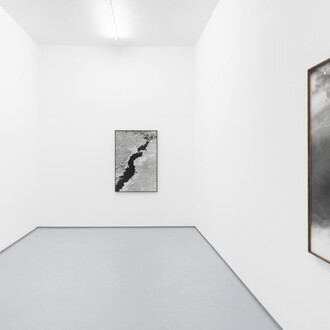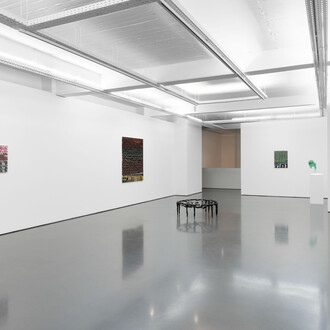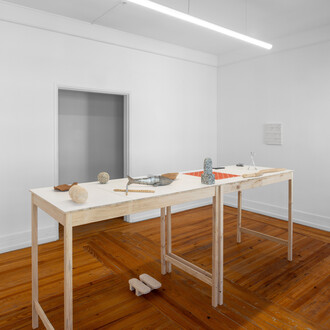Madragoa is proud to present Homework, an exhibition featuring works by Sara Graça, Lea Managil, Adriana Proganó, Alice dos Reis, Eduardo Fonseca e Silva & Francisca Valador and Jaime Welsh.
The research behind this project (a key “homework” for our gallery) has been focused on the recent production of a younger generation of artists in Portugal. Rather than willing to be a survey of a younger generation, the show tries to instigate a less- -conventional conversation between very different artistic practices: in each of them though, a common aim for the creation of a surreal vision that involves the body and the spectator seems to be emerging. Through a subtle technological approach or more traditional medias, each of the artists in the exhibition invites the spectator into his own world, where what you see is exactly what you don’t get.
Welcomed by Lea Managil’s (1991, Lisbon, Portugal) installation Scratch, we are confronted by a recognizable sound, easily found in our collective memory, that is often just fading in our everyday lives, unnoticed.
Also Eduardo Fonseca e Silva (1993, Lisbon, Portugal) & Francisca Valador’s (1993, Lisbon, Portugal) paintings seem to want to remain unnoticed with their small scale and the insignificancy of the objects depicted, at the same time creating images that are very charged emotionally. Sara Graça’s (1993, Lisbon, Portugal) drawing starts from a web search into the term “empathy”: one of the resulting images has been turned into a personal vision of an unknown context. Personal questions arise also in the artist’s poster installation spread for the occasion in different locations in the city , while the fictitious environments of real estate luxury renderings in Alice dos Reis’ (1995, Lisbon, Portugal) video are turned by a very tangible blackout. In Adriana Proganó’s (1992, Luzern, Switzerland) painting Girl steals ducks, because, ducks are important a female figure multiplies herself to chase and steal ducks around a fountain, in a bacchanal of animal and human bodies, while Jaime Welsh’s (1994, Lisbon, Portugal) subjects seem to be performing an uncanny state of hyper- -passivity, stuck in a self-sufficient dimension where nothing moves, created by the artist through a subtle post-production of the images.















